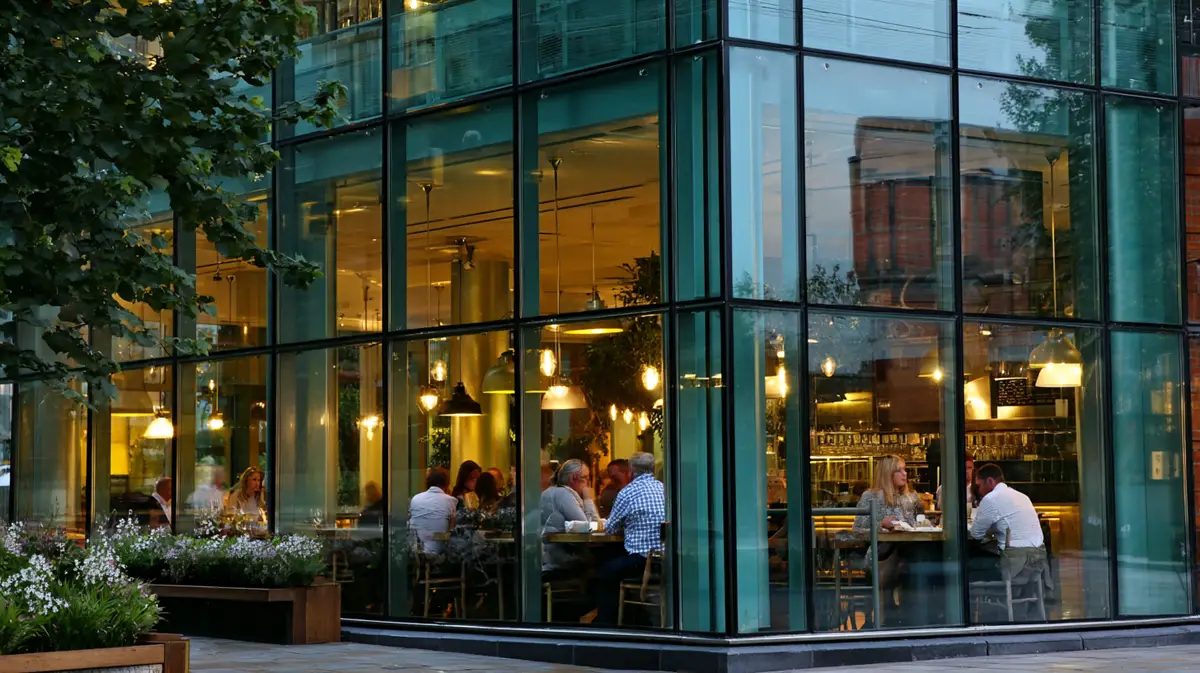The Digital Shift in Hospitality: How Tech Is Redefining the Dining Experience

The hospitality industry has always been driven by one primary goal: creating exceptional guest experiences. But in an era where consumer behaviour is shaped by digital convenience, the path to achieving that goal has fundamentally changed. Diners now expect seamless interactions before they even set foot in a restaurant. From browsing menus online to reserving a table within seconds, the experience must start digitally – and it must be flawless. Restaurants that fail to deliver this risk not only being overlooked but becoming irrelevant.
The phrase “Restaurants Are Going Digital – Are You?” isn’t just a trendy slogan; it’s a wake-up call. Digitalisation is no longer optional for restaurateurs — it is the new baseline. The good news? The shift brings more than just pressure. It unlocks new opportunities to streamline operations, understand customer preferences, and ultimately serve guests better.
One of the most immediate and impactful changes is the integration of restaurant online booking platforms. They don’t just make life easier for customers — they also offer measurable benefits for businesses, from optimising table turnover to reducing no-shows.
Understanding the Modern Diner: What Guests Expect in 2025
Today’s diners are digital natives. They’ve grown accustomed to the frictionless convenience of online shopping, real-time updates, and instant confirmations. These expectations have spilled over into the restaurant experience. For many, if a table can’t be booked online — ideally in under a minute — the venue might as well not exist. This shift isn’t limited to Gen Z or millennials; baby boomers are increasingly embracing digital interfaces too. The expectation of a modern dining experience begins long before the first course is served.
Menus available through QR codes, allergen filters, loyalty apps, and digital ordering are no longer futuristic concepts — they’re part of daily life. Customers want autonomy, speed, and personalisation. And when these elements are missing, it doesn’t just create inconvenience — it damages the brand. That’s why the ability to offer a coherent and responsive digital experience is quickly becoming as important as the quality of the cuisine itself.
“Digital convenience isn’t just a trend; it’s the new baseline for guest satisfaction.”
What’s perhaps most revealing is how digital expectations have redefined what it means to be ‘welcoming’. It’s not just about a smile at the door anymore — it’s about a fast-loading website, intuitive mobile navigation, and the ease of accessing and modifying reservations online. These elements shape first impressions long before any physical interaction takes place.
Digital Tools That Are Transforming the Guest Experience
The technological toolbox available to restaurant owners today is vast and constantly evolving. Tools that were once exclusive to multinational chains are now accessible to independent restaurants and small hospitality groups. The result is a democratisation of digital excellence — and an intensification of competition.
At the core of this transformation is a suite of integrated tools designed to enhance every step of the customer journey. Consider how a centralised booking platform links seamlessly with a point-of-sale system. Now, customer preferences, allergies, or special requests made online can be flagged for staff automatically before the guest even arrives. Add a CRM system into the mix, and restaurants can follow up with personalised offers or loyalty rewards. The days of pen-and-paper logs and memory-based service are gone; automation is the new maître d’.
Among the most game-changing technologies are:
- Mobile-responsive booking pages
- Automated waitlists with SMS updates
- Cloud-based POS systems with real-time data
- AI-powered guest segmentation tools
- Digital feedback systems integrated with review platforms
Together, these tools provide more than operational benefits. They help restaurants craft seamless, emotionally satisfying journeys that increase return visits and positive reviews. Technology, when used thoughtfully, becomes an extension of hospitality itself.
Why Operational Efficiency Depends on Going Digital
While the guest experience often takes centre stage in discussions about restaurant innovation, the behind-the-scenes benefits of going digital are just as transformative. Operational efficiency is the silent engine that powers profitability, and digital tools are rapidly redefining what streamlined operations look like.
For example, a digital reservation system doesn’t merely make it easier for customers to book — it gives the restaurant precise insights into peak hours, average party sizes, and no-show patterns. These insights lead to better staffing, inventory control, and service pacing.
Gone are the days of overstaffing on slow nights or underpreparing for busy shifts. With access to real-time analytics, managers can forecast demand with far greater accuracy. Similarly, kitchen operations benefit from integrations between ordering systems and inventory management tools. When a customer places an order online or in the dining room, the system can update ingredient quantities in the backend — reducing waste and helping track popular dishes. This automation also reduces human error, ensuring smoother service and improved communication between front- and back-of-house.
Comparison of Traditional vs Digital Restaurant Operations
| Area | Traditional (Analog) | Digital (Modernised) |
|---|---|---|
| Reservations | Manual phone calls, hand-written log | Online system with real-time availability |
| Order Management | Verbal communication, risk of error | Integrated POS with digital ticketing |
| Inventory Tracking | Weekly manual counts | Live syncing with sales and auto-reordering alerts |
| Customer Data | Rarely recorded or used | Centralised CRM with preferences and history |
| Staff Scheduling | Fixed weekly rota | Dynamic scheduling based on booking data |
This digital infrastructure not only saves time — it empowers staff to focus more on delivering genuine hospitality rather than managing logistics. When the operational backbone runs smoothly, it opens the door for memorable guest interactions and greater employee satisfaction.
How to Get Started With Digital Transformation
Taking the first steps toward digital transformation can feel daunting, especially for small or traditional restaurants that have relied on analog methods for decades. The key is to recognise that digitalisation is a gradual journey, not an overnight overhaul. Success lies in prioritising high-impact changes that align with your business goals and customer needs.
Start with an honest audit: Which systems are still manual? Where do errors or delays most often occur? Next, define clear goals — do you want to reduce no-shows, increase repeat business, or streamline kitchen communication? Based on those insights, you can begin selecting tools that address your most urgent challenges. For many restaurants, a logical first move is adopting a restaurant online booking platform. It’s a simple yet powerful step that immediately enhances guest experience while feeding your backend with actionable data.
From there, consider the following roadmap:
- Integrate booking and POS systems: Ensures smooth handoffs and detailed reporting.
- Implement digital waitlists: Reduce frustration during busy periods.
- Build a CRM strategy: Personalise guest engagement based on behaviour.
- Digitise your menu: Offer filtering for dietary preferences and updates in real time.
- Train your team: Invest in onboarding staff with every new system.
The success of a digital transformation isn’t just measured by tech adoption but by cultural shift. It requires leadership buy-in, staff confidence, and a commitment to ongoing optimisation. This mindset will prepare your business not just for today’s demands but for tomorrow’s expectations.
The Future Is Now: What’s Next for Digital Dining?
Looking ahead, it’s clear that the trajectory of the hospitality industry is firmly digital. What began as simple reservation systems and website menus is rapidly expanding into AI-powered customer engagement, predictive analytics, voice-activated ordering, and even virtual dining experiences. Restaurants that embrace these technologies are not just adapting — they’re leading. And leadership in this space means delivering value across multiple touchpoints: speed, personalisation, flexibility, and transparency.
However, embracing technology doesn’t mean sacrificing authenticity or warmth. In fact, the most successful digital dining experiences are those that blend efficiency with human connection. Technology should serve the restaurant’s mission — not replace it. By removing friction points, digital tools allow teams to focus on meaningful service moments. Whether it’s remembering a guest’s favourite table or sending a thank-you message after a meal, tech empowers restaurants to go beyond expectations.
What’s certain is that digital evolution in hospitality is not a passing phase. Customers will continue to raise their expectations. Restaurants that act now and invest in foundational systems — such as restaurant online booking and smart CRM strategies — position themselves for sustainable growth. They don’t just survive digital transformation; they thrive because of it.










